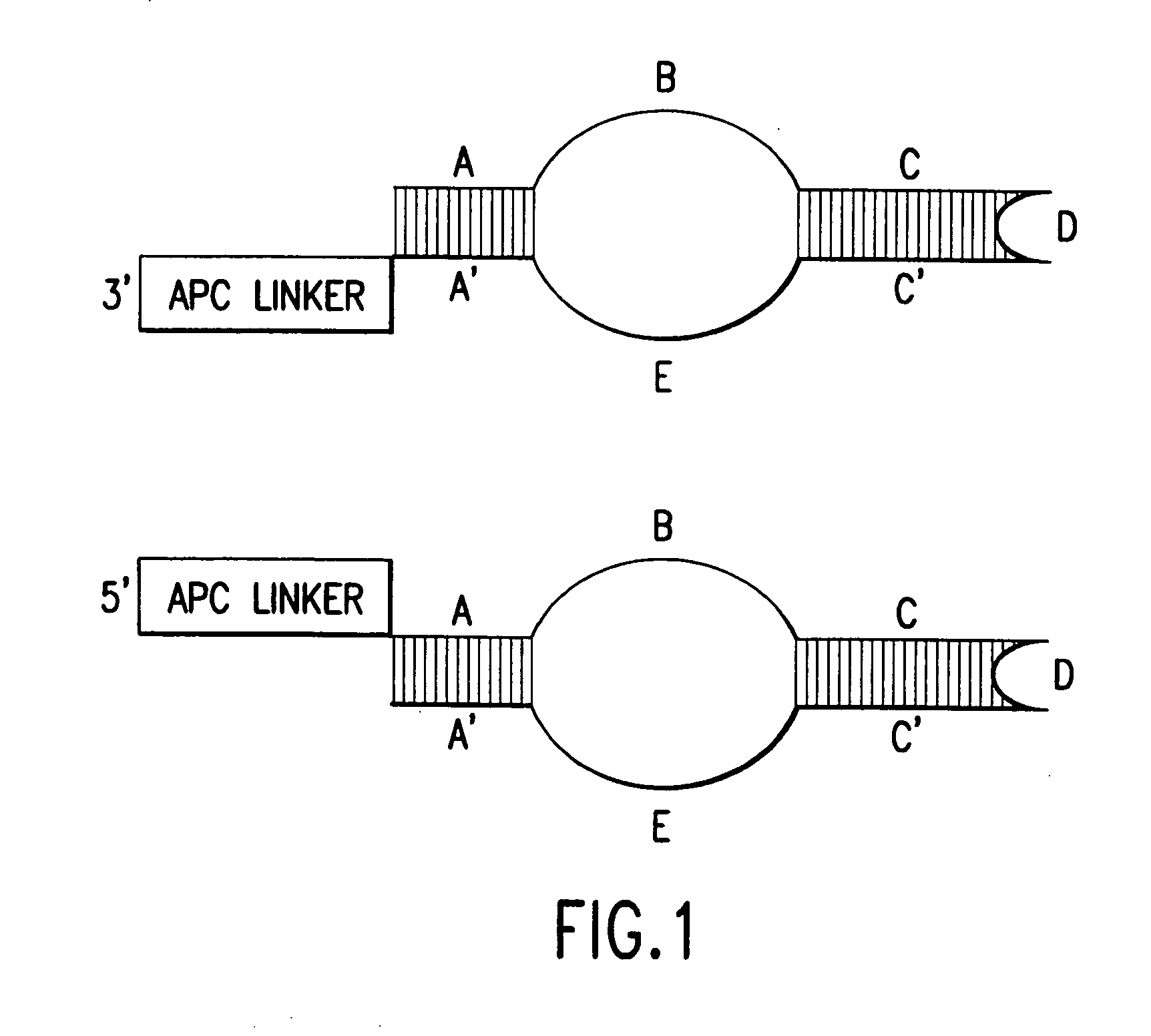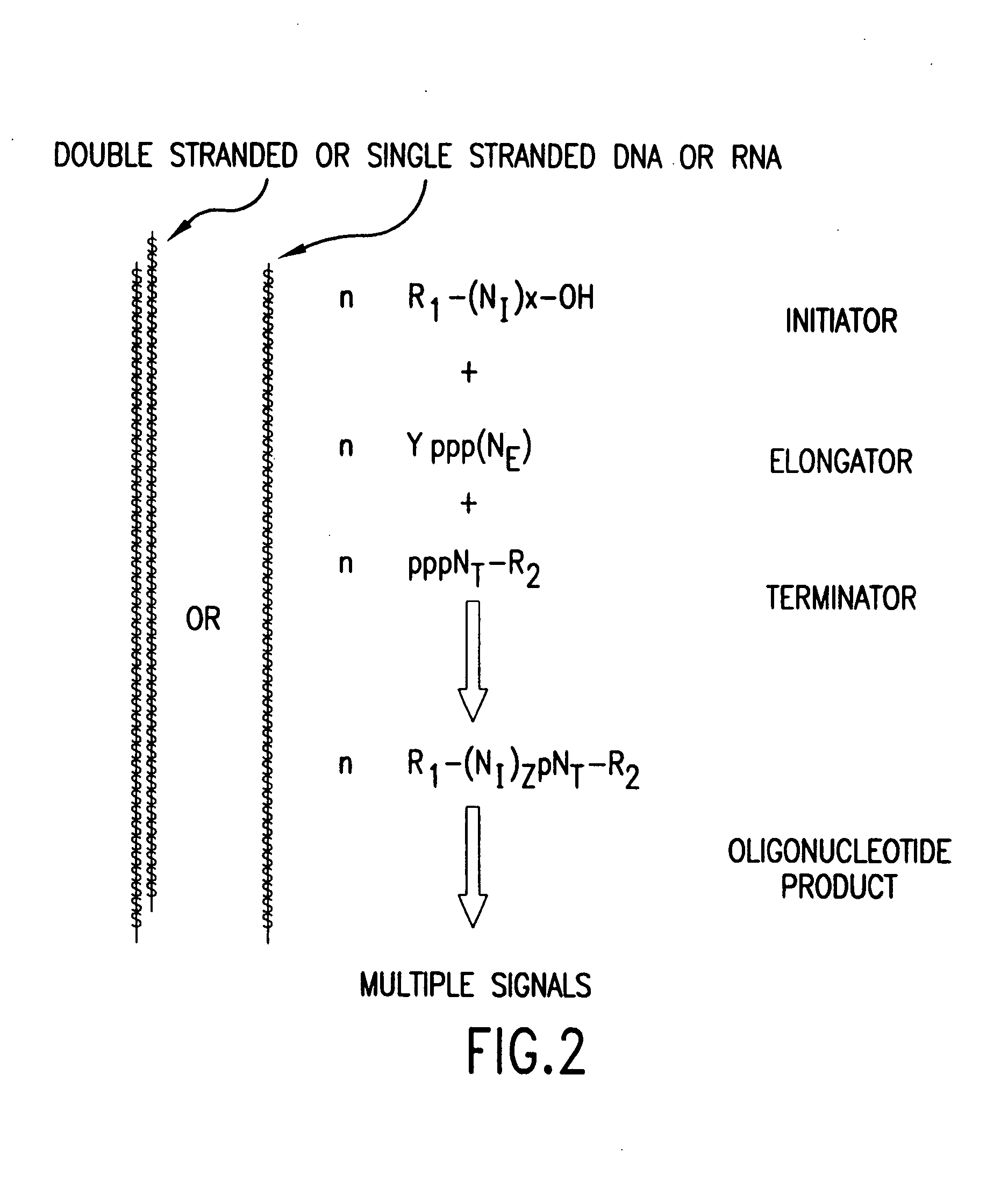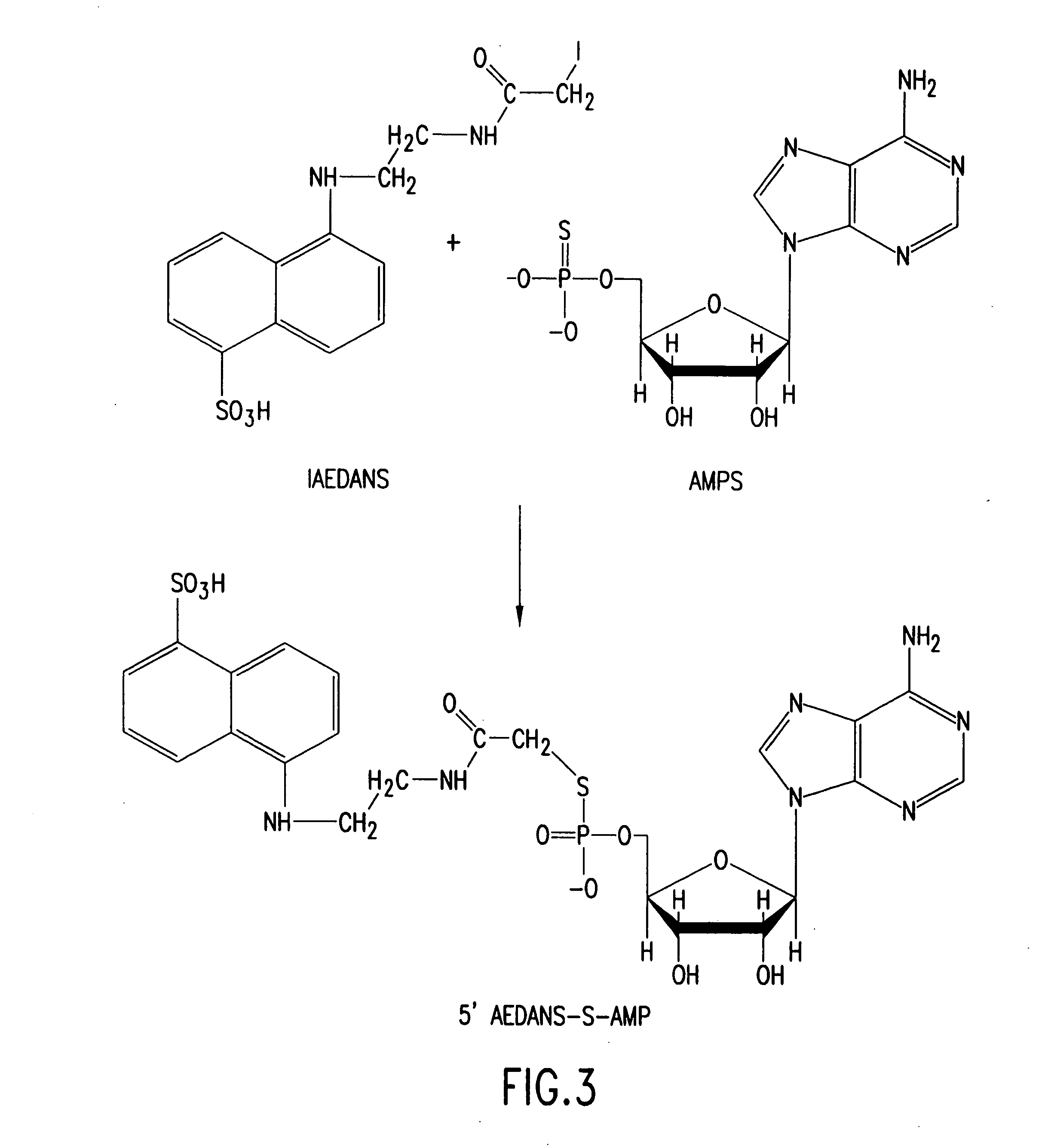Molecular detection systems utilizing reiterative oligonucleotide synthesis
a detection system and oligonucleotide technology, applied in the field of detection kits for the detection of target molecules, can solve the problems of amplification reactions performed using thermocycling processes that require a significant amount of time to reach completion, lack of sensitivity of such assays, and inability to detect the presence of a single molecul
- Summary
- Abstract
- Description
- Claims
- Application Information
AI Technical Summary
Benefits of technology
Problems solved by technology
Method used
Image
Examples
example 1
Synthesis of a Dye Labeled Initiator
[0290] One of several reactions to chemically modify a nucleotide is described herein. 5′ a-S-CTP, which was purchased from TriLink BioTechnologies, was treated following the manufacturer's instructions with calf intestinal phosphatase. The phosphatase treatment is important because it increases the efficiency of the labeling reaction. Following phosphatase treatment, 12.5 mM α-S-CMP was mixed with 5 μl of 0.2 M NaHCO3, 15 μl of DMF, and 15 μl of 90 mM IAEDANS (purchased from Molecular Probes) in DMF, and incubated at room temperature for 1 hour. The reaction was extracted with 5 volumes water saturated ethyl ether. The aqueous phase was removed and the ether eliminated by evaporation. Thin layer chromatography was performed following standard protocols known in the art, and demonstrated that the reaction successfully produced 5′-IEADANS-S-CMP (FIG. 26).
example 2
RNA Primer-Initiated Abortive Transcription with an RNA Polymerase
[0291] Reaction conditions have been optimized for abortive trancription initiaton. The components and concentrations of Buffer T favor abortive transcription initiation. Buffer T is comprised of: 20 mM Tris-HCl pH 7.9, 5 mM MgCl2, 5 mM beta-mercaptoethanol, 2.8% (v / v) glycerol. Primers are either ribonucleoside-triphosphates (NTPs) or dinucleotides ranging in concentration from 0.2-1.3 mM. Final NTP concentrations range from 0.2-1.3 mM. The high ends of the concentration ranges are designed for preparative abortive transcription. The template DNA concentration is less than 2 μM in terms of phosphate. E. coli RNA polymerase is added to a final concentration of between 15 nM and 400 nM. Either holoenzyme or core can be used with a single-stranded template DNA. Yeast inorganic pyrophosphatase is added to 1 unit / ml in preparative reactions to prevent the accumulation of pyrophosphate. At high concentrations pyrophosphat...
example 3
Abortive Initiation Reaction with a Labeled Terminator
[0302] Abortive transcription initiation reactions may be performed with a labeled initiator and / or a labeled terminator. The following reaction conditions were used to incorporate a labeled terminator: [0303] 5 μl 1× Buffer T [0304] 3 μl 100 ng denatured DNA template (pBR322) [0305] 13.5 μl dd H2O [0306] 1 μl E. coli RNA polymerase [0307] 1.2 μl dinucleotide initiator ApG [0308] 1.5 μl of 7 mM SF-UTP
[0309] Incubate mixture at 37° C. for 16 hours in temperature controlled microtitre plate reader. Thin layer chromatography was performed using standard methods known in the art, and demonstrated that the labeled trinucleotide ApGpU was generated (FIG. 28).
PUM
| Property | Measurement | Unit |
|---|---|---|
| temperatures | aaaaa | aaaaa |
| temperatures | aaaaa | aaaaa |
| temperatures | aaaaa | aaaaa |
Abstract
Description
Claims
Application Information
 Login to View More
Login to View More - R&D
- Intellectual Property
- Life Sciences
- Materials
- Tech Scout
- Unparalleled Data Quality
- Higher Quality Content
- 60% Fewer Hallucinations
Browse by: Latest US Patents, China's latest patents, Technical Efficacy Thesaurus, Application Domain, Technology Topic, Popular Technical Reports.
© 2025 PatSnap. All rights reserved.Legal|Privacy policy|Modern Slavery Act Transparency Statement|Sitemap|About US| Contact US: help@patsnap.com



